Hypercar revolution: 2023’s new dawn for sports car racing
A new era is dawning for sports car racing in 2023, with manufacturers flocking back. Gary Watkins is your guide for the Hypercar revolution
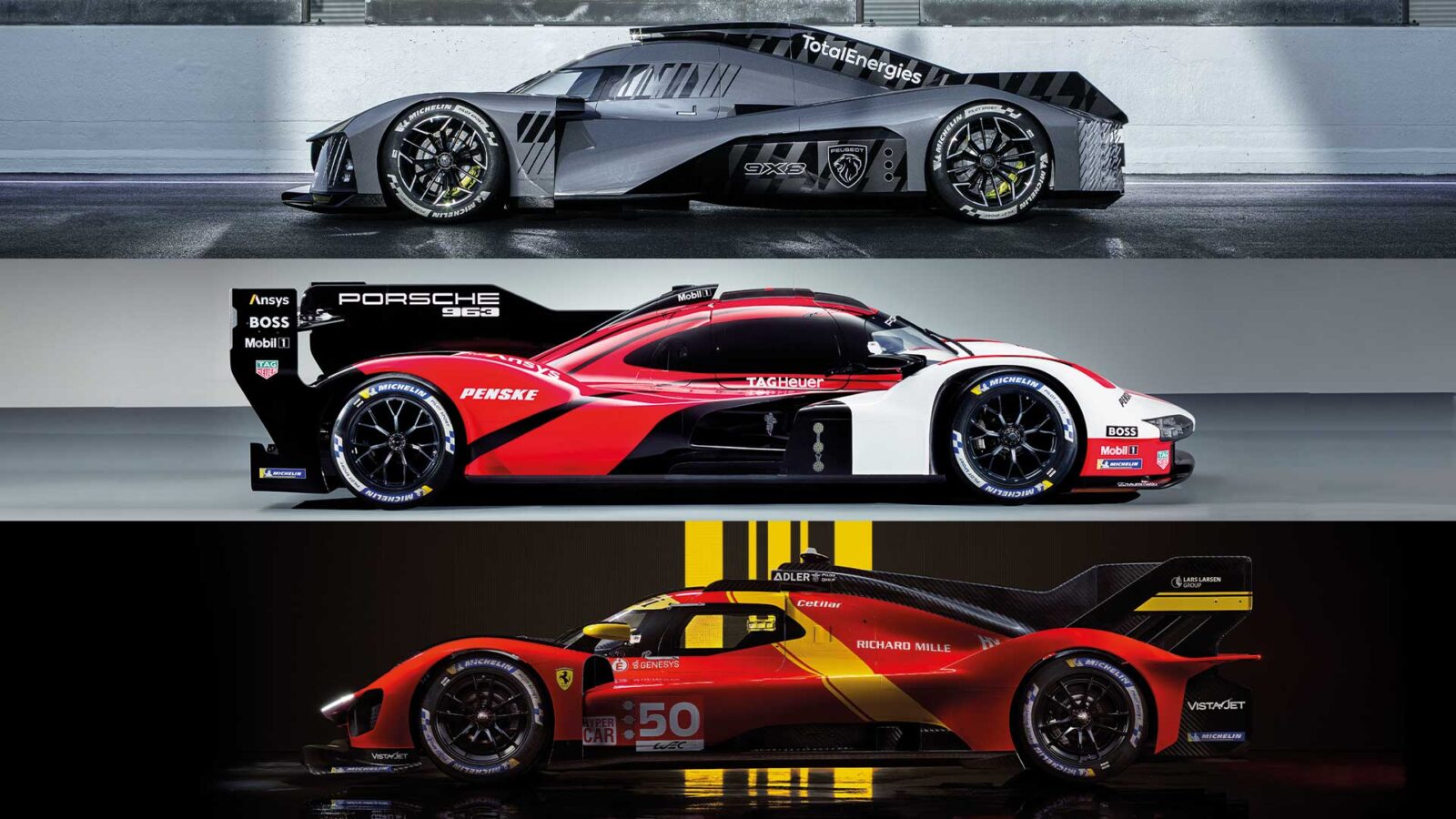
Peugeot Sport / Porsche AG / Philipp Rupprecht
This is it. Finally, and after so long, premier-level sports car racing is united. The same cars that race at the Daytona 24 Hours and Sebring 12 Hours in America’s IMSA SportsCar Championship can now compete at the Le Mans 24 Hours in the World Endurance Championship – and major manufacturers are flocking back. Two parallel rule books are the key: Le Mans Hypercar (LMH) allows for greater technical freedom and four-wheel drive through front-axle hybrid systems; LMDh is simpler, more contained and based around a spec rear-axle hybrid on the spine of a next-generation LMP2 chassis, yet still allows for creative expression. Both forms should be able to race on an equal basis – and crucially win thanks to a system of Balance of Performance. So who’s in, and who’s doing what in what’s known confoundingly as Hypercar in WEC and GTP in IMSA? Let’s find out as a new golden era for a united world of endurance racing begins.
Toyota
Class: LMH 2023 programme: Two cars in WEC
Drivers: No7 Kamui Kobayashi, Mike Conway, José Maria López; No8 Sébastien Buemi, Brendon Hartley, Ryo Hirakawa
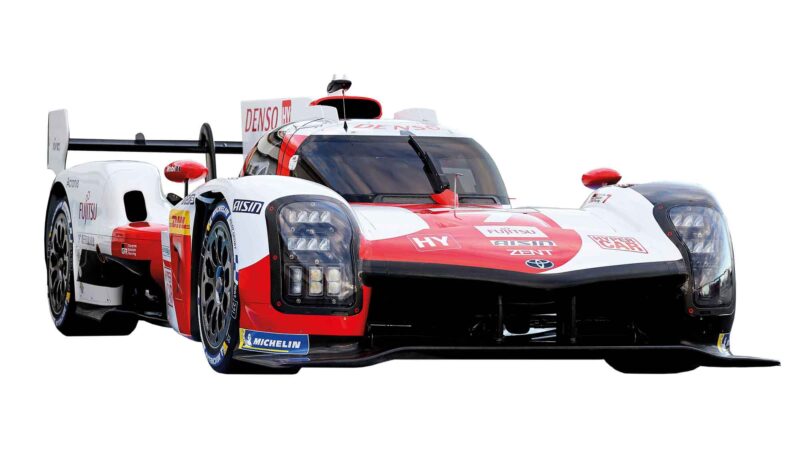
Toyota has been all-conquering in recent years, but now it actually has some stern challenges
The vital statistics of the four seasons in which Toyota raced alone as the only major carmaker undertaking a full season in the WEC, two in LMP1 and two in Hypercar, make for impressive reading: five Le Mans victories and a further 18 wins, as well as a clean sweep of the drivers’ and manufacturers’ titles each time. But now it gets serious for the Toyota Gazoo Racing squad. Perhaps more pertinently it has the chance to cement its sports car legacy by beating Ferrari, Porsche, et al.
Toyota is returning to the WEC with an update of the GR010 Hybrid LMH introduced at the start of 2021. It is understood to have had a new design on the drawing board but took the decision around Le Mans time in 2022 to continue with a rejig of the existing package. What the upgrades will be remains secret, only that they will be more subtle than last season when the car was revamped to run different-sized tyres front and rear. An announcement is likely only in the run-up to the season-opener at Sebring.
The driver line-up is unchanged, however. José Maria López stays as part of the No7 crew that won the title in 2019/20 and ’21 after Toyota had to abandon plans to promote Nyck de Vries from his test and reserve role when he landed a Formula 1 ride with AlphaTauri.
As the reigning champion and the manufacturer with the most experience in the WEC, all eyes will be on Toyota in 2023 as it enters an 11th consecutive season in the championship. The BoP might equal things up in terms of car performance, but teamwork, strategy, reliability and, crucially, getting the most out of a set of tyres through a double stint, lay outside its scope. That’s where Toyota will be hoping, or even expecting, to score big.

Q&A
Sébastien Buemi, driver No8 Toyota
Is it a big deal to be racing against Ferrari and Porsche in the WEC after so many years as the lone manufacturer?
“My view is that I think we have a chance to prove a point. We know how hard we have been pushing and how difficult it has been over the past five years, but people on the outside don’t necessarily see that. Winning in the future will prove something to those people. If we win this year, next year or whenever, there can be no discussion. It would be massive for me to win with the competition that’s coming, especially after 2016. We lost Le Mans victory with Anthony [Davidson] and Kazuki [Nakajima] on the last lap at a time when Audi and Porsche were committed to the WEC. That’s still hard. Another win would make up for that.”
Is Toyota favourite for honours in the WEC and at Le Mans?
“It’s a bit difficult to deny that we will likely be the favourites. We’ve won Le Mans five times in a row now, and the regulations aren’t changing that much and we also have a well-proven car. Even if Ferrari and Porsche, and Cadillac too, will have done a huge amount of testing before they join us to race, we are the ones with the experience. But we’re staying humble and we certainly will not be underestimating anyone.”
The rules also allow Toyota to race at the Daytona 24 Hours; is it an ambition to try to win that race?
“It is going to become more and more difficult for me as a Toyota driver to do Daytona because it would really mean driving for a competitor we’re facing in the WEC. The only chance of doing it will be with Toyota. That’s not planned at the moment, but one day I hope it will happen. I’d like to win that race.”
Ferrari
Class: LMH 2023 programme: Two cars in WEC
Drivers: Any six from Alessandro Pier Guidi, James Calado, Antonio Fuoco, Miguel Molina, Davide Rigon, Nicklas Nielsen and Alessio Rovera
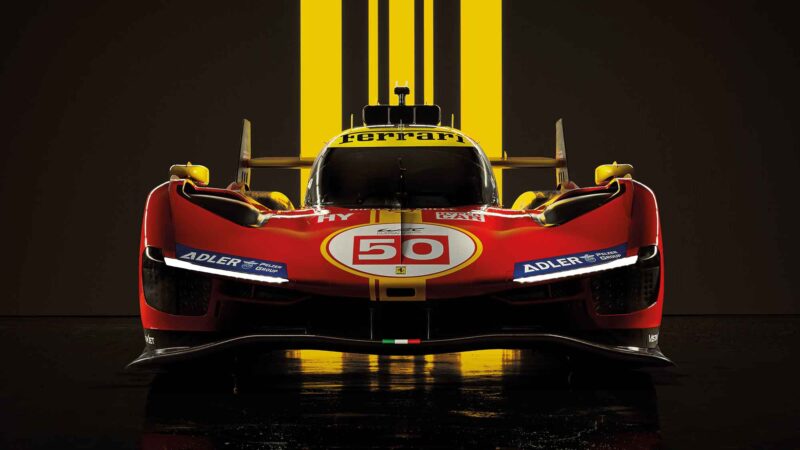
At long last, Ferrari returns to the top class. It’s only taken 50 years… but what a sight its 499P is
Philipp Rupprecht
One of the longest waits in motor racing history is finally over. Ferrari is returning to top-level prototype racing as a factory team after an absence of 50 years. Or to put it another way, half the lifetime of the Le Mans 24 Hours itself, a race it has won nine times.
Its comeback with the 499P LMH owes a lot to those numbers. The 50th anniversary of its last shot at outright victory with the 312PB in 1973 and the 100th birthday of the French enduro in 2023 were compelling draws when it looked at making a return. But so were rules that allow for a cost-effective entry at a fraction of what the manufacturers were spending during the LMP1 era and the freedoms that give a carmaker the chance to imbue its racer with the look of its road vehicles.
Nor was the significance of the era just about to begin lost on Ferrari and its sports car racing boss Antonello Coletta, the architect of the 499P programme. Ferrari wanted to be part of something big. So it would be fair to say that the stars aligned for the Scuderia to facilitate the biggest sports car story since Porsche ended another long absence in 2014.
The historic day of Ferrari’s comeback announcement came in February 2021. The 499P – named after the capacity of one cylinder of its twin-turbo V6 – was up and running at Fiorano back in July and since then has been on a whirlwind development programme: the marque has been conscious that it has a lot of catching up to do with the manufacturers incumbent in the WEC, as well as Porsche, which has been busy testing its LMDh for a year already. It had two cars running alongside each other almost from the get-go.
The pressure will be on for Ferrari when it and its chosen partner team – AF Corse, which gained vital experience of prototype racing in LMP2 last year to smooth its step up from GT racing to run the Hypercar programme – arrives in the WEC at Sebring in March. As Coletta says: “When Ferrari competes in a category, people see Ferrari first and then all the others.”

Q&A
Ferdinando Cannizzo, Ferrari sports car racing technical director
Can you explain the choice of a twin-turbo V6 engine?
“We considered a V12, a V8, a V6… everything. When you make a decision you have to understand what you are losing if you go in one direction. Selecting the V6 was definitely the right path to follow considering the way our range of road cars is moving – it was natural to go that route.”
Is it based on the engine in the new 296 GTB road car and the GT3 racer?
“It is a 120-degree ‘hot vee’, the same architecture as the 296. But it is a stressed engine, so it is completely different in terms of structure. It is not the same engine. There was a huge weight reduction we were able to do.”
When did the engine first run?
“The engine was the first thing we started. It ran for the first time at the beginning of 2021 [before the project was signed off], so we made a bit of a bet!”
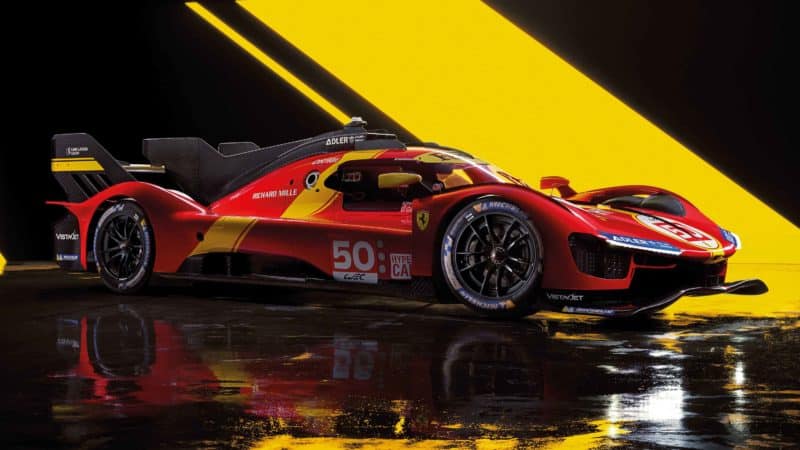
Philipp Rupprecht
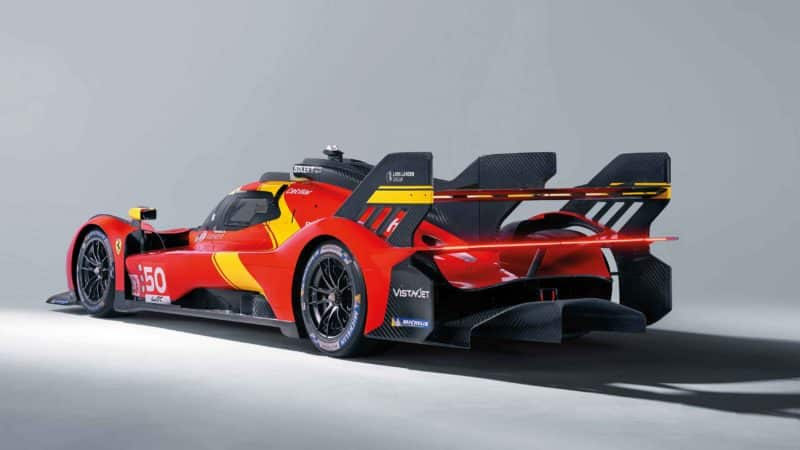
AF Corse has been charged with running Ferrari’s new LMHs
Philipp Rupprecht
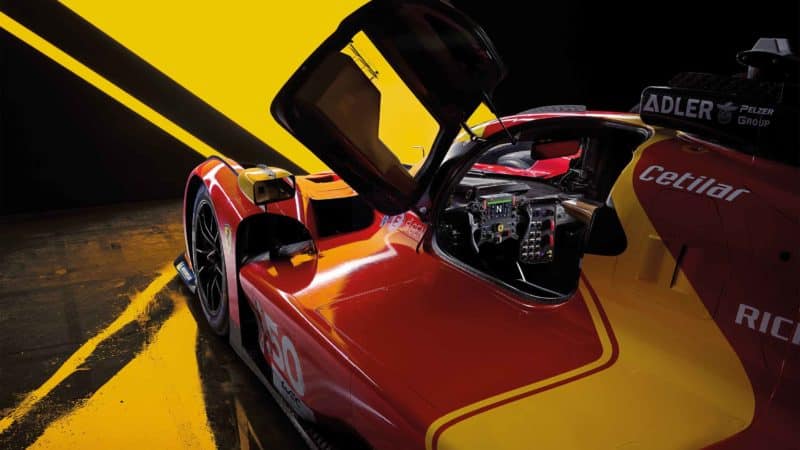
Unlike virtually the entire LMP1 crop, the achingly pretty 499P has been racking up the test miles since last summer
Philipp Rupprecht
Porsche
Class: LMDh 2023 programme: Two factory cars in WEC, two in IMSA
Drivers: André Lotterer, Felipe Nasr, Nick Tandy, Kévin Estre, Frédéric Makowiecki, Laurens Vanthoor, Michael Christensen, Dane Cameron, Mathieu Jaminet, Matt Campbell (to be allocated across the four cars)
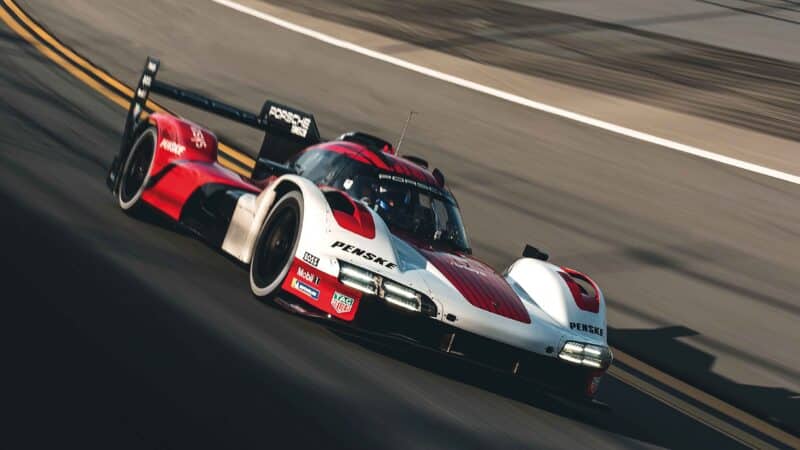
Porsche’s 963 may well be ahead of the LMDh pack, thanks to almost a year of testing already. But the proof will come when it makes its debut at Daytona
Porsche AG
Porsche was the first manufacturer to put its hand up in support of LMDh and was almost certainly the first to get board approval, though not the first to commit publicly. But that commitment, announced in December 2020, means that it will be back at the top of the sports car tree only five years after it axed its LMP1 programme with the 919 Hybrid. That compares with the 15-year absence ended by the arrival in 2014 of that car, which would go on to score a hat-trick of Le Mans wins.
As an early adopter, Porsche got its LMDh out on track ahead of its rivals. A car that was subsequently christened the 963 was up and running as early as last January, giving it a six-month head start. It’s not quite what it may seem, however. Much of that time was spent debugging the off-the-shelf LMDh hybrid system produced by Bosch, Williams Advanced Engineering and Xtrac.
A key selling point of the new category for Porsche was that it could race the same car in both WEC and IMSA. It kicks off another chapter in its rich sports car racing history with a pair of two-car assaults in conjunction with Penske. A new entity called Porsche Penske Motorsport will look after the programmes from Mannheim in Germany and Mooresville, North Carolina respectively.
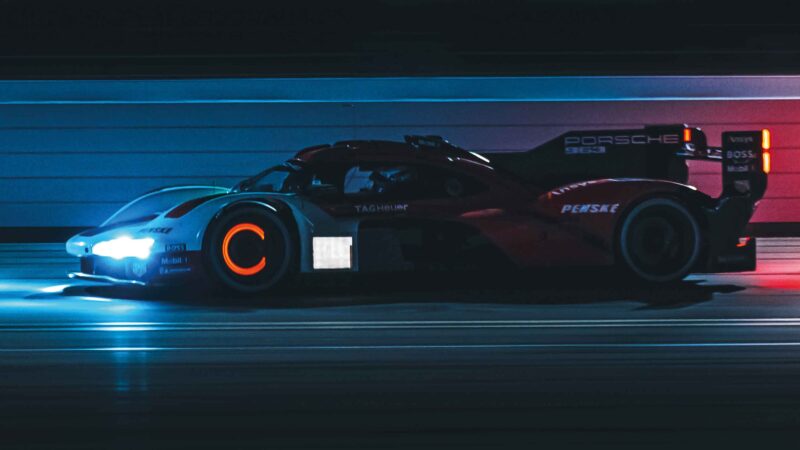
Porsche has already conducted several endurance tests, including a 36-hour run at Sebring back in October
Porsche AG
Penske ran Porsche’s RS Spyder LMP2 programme of 2005-08 and the V8 from that car was the starting point for the 963’s internal combustion unit. What started out as a 3.4-litre normally aspirated unit, morphed through a 4.6-litre version in the 918 Spyder plug-in hybrid road car and has now been turbocharged for the LMDh.
The chassis of a new 963, the nomenclature of which tips its hat to the all-conquering 962 Group C car, has been developed by the Canadian-based Multimatic Motorsports organisation. It was also behind the abandoned Audi LMDh, which would have been a 963 with different bodywork.
Audi canned its programme early last year, but there will still be multiple Multimatic-built cars on the grid in both WEC and IMSA. Customer cars are an integral part of the Porsche programme and there will be privateer 963s racing from early in the year.

Q&A
Thomas Laudenbach, head of Porsche Motorsport
Why is Porsche back so soon after the 919 chasing outright honours in sports car racing?
“Endurance racing is our living room. It’s in Porsche’s DNA – 19 outright victories at Le Mans, what can you say? You always have to look at what you have to invest and what you get back from a programme. Building a car to one specification that you can race globally and in North America – which is a very important market for us – was the big selling point.”
How important was it to have customers racing the 963 in year one?
“Again, that is part of our DNA: it has always been Porsche’s philosophy to sell its race cars to other teams. We said from day one that we would have customer cars racing in year one. It is a brave approach, and it would definitely have been easier to wait for year two.”
As a manufacturer with 19 wins at Le Mans and 18 at Daytona, do you feel the pressure to win again?
“You always have pressure in motor sport and there is pressure this time, but in a healthy way. Healthy pressure helps you to be good.”
Vanwall
Class: LMH 2023 programme: Plans to make a WEC entry for at least one car
Drivers: Tom Dillmann and Esteban Guerrieri will race if the entry is accepted
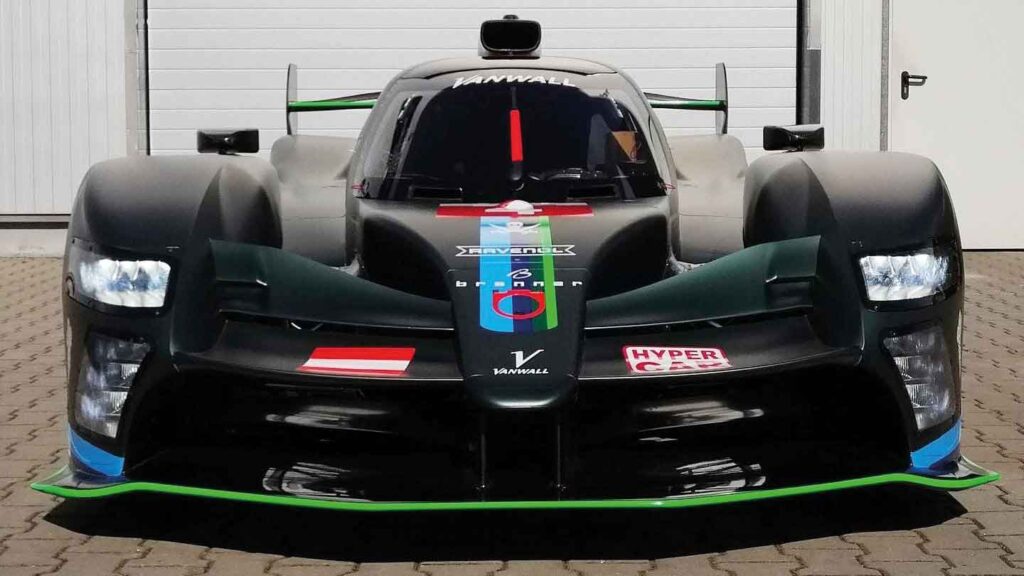
The Vanwall name could be back in international motor sport after a 62-year absence next year if the German ByKolles operation gets an entry for its LMH bearing the name of the British F1 team of 1954-60. That has to be a big if, given that it was turned down for 2022.
ByKolles, a participant in LMP1 with its long-serving CLM P1/01 design of 2014-20, has been working on its LMH since 2018. It registered the Vanwall trademark in Europe and a number of other territories early last year and has dubbed its new prototype the Vandervell LMH after Colin Vandervell, the founder of the original team.
The car, designed and developed entirely in-house by ByKolles, is powered by the Gibson normally aspirated V8, the last of three engines that found their way into the back of the P1/01 over its life. The team opted for the non-hybrid route, like Glickenhaus, as a more cost-effective entry into the LMH class.
The Vanwall has been up and running since March, mostly in the hands of Tom Dillmann and Esteban Guerrieri, who will be part of the race squad if it makes the cut. At least one car is planned from Vanwall Racing, but that hinges on the ACO and the FIA welcoming the team back to the WEC.

Q&A
Colin Kolles, team owner
Why have you decided to build your own LMH?
“When we raced in LMP1 people asked me why we were spending so much money when we had no chance. But it was always my ambition to build my own car. LMP1 was an investment to reach the point at which we are today.”
Is this car a step forward on the P1/01?
“You cannot compare it. This car has been built to a very high level, to F1 standards.”
What can you achieve with the Vandervell LMH?
“We are are not scared of anyone. We think we have a very strong package.”
Cadillac
Class: LMDh 2023 programme: One car in WEC, two in IMSA
Drivers: WEC: Cadillac Racing (Ganassi) – Earl Bamber, Alex Lynn, Richard Westbrook; IMSA: Cadillac Racing (Ganassi) – Sébastien Bourdais, Renger van der Zande, Scott Dixon (Daytona); Action Express Racing – Pipo Derani, Alexander Sims, Jack Aitken (Daytona, Sebring, Road Atlanta)
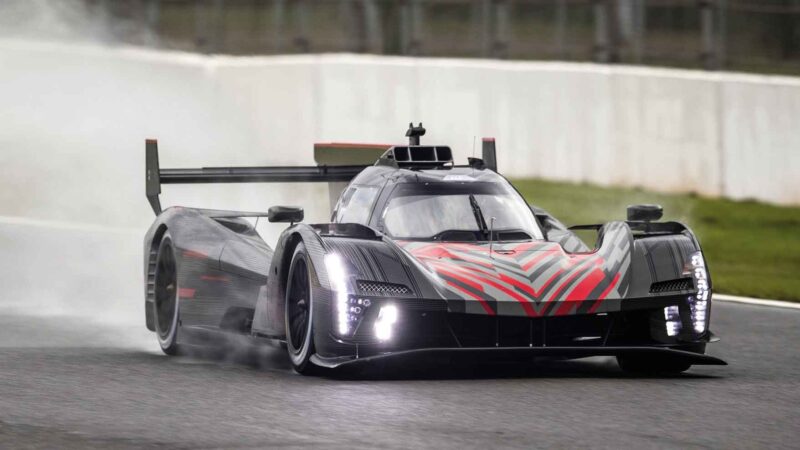
With a Dallara chassis and proven drivetrain, Cadillac has three cars up and running already
Richard Prince/Cadillac
Cadillac was the ‘winningest’ marque — to use true American parlance — during the Daytona Prototype international era of 2017-22 and General Motors always looked likely to continue its participation in IMSA under the new rules. The big news, though, when the General Motors brand confirmed a programme that was long since in the works in September ’21 was that it would also be contesting the WEC and bidding for Le Mans victory for the first time since its Northstar LMP of 2000-02.
A single entry will be fielded in the world championship by the Chip Ganassi Racing-run Cadillac Racing squad, which will also run one LMDh in IMSA alongside a car from Action Express Racing. The General Motors brand has all but confirmed that it will be filing entries for both the IMSA cars to go to Le Mans. The Ganassi WEC entry will also take in Daytona.
Cadillac has maintained its relationship with Italian constructor Dallara for its new prototype, which is known as the V-LMDh. Underneath the aggressive styling is a 5.5-litre normally aspirated V8. It’s the same capacity and architecture as the power unit in its DPi-V.R, though it is billed as all new.
Like Acura and BMW, the new car was up and running in the summer, so six months after the Porsche. Unlike the other LMDhs, the V-LMDh began testing in North America and has continued its programme, with two cars, on home ground. With three cars in the field, more than the other manufacturers, and a successful 24-hour test behind it, Cadillac might just be favourite to kick off the bright new era.
Q&A
Laura Wontrop Klauser, GM sports car racing programme manager
Why did you bring a second test car on stream so early in the programme last summer?
“It was important because the job list we had was far too long for one car; we needed two to get through it. We also needed to be sure that both our teams are properly prepared for Daytona. The sooner you can get a car in a team’s hands, the sooner you get drivers behind the wheel and the better off you will be when we begin racing.
How successful was your 24-hour test with the V-LMDh at Sebring in November?
“It was a good test. We did 24 straight hours, which is ideally the way you want to do it because the car doesn’t cool down and gives the best representation of race conditions. I can say that we didn’t have any significant issues.”
How many cars would you like at Le Mans?
“As many as we can. If you have a full-season entry, you’re guaranteed Le Mans because that’s part of the season, so we’ll have at least one. The rest of it is waiting and working it out with the ACO.”
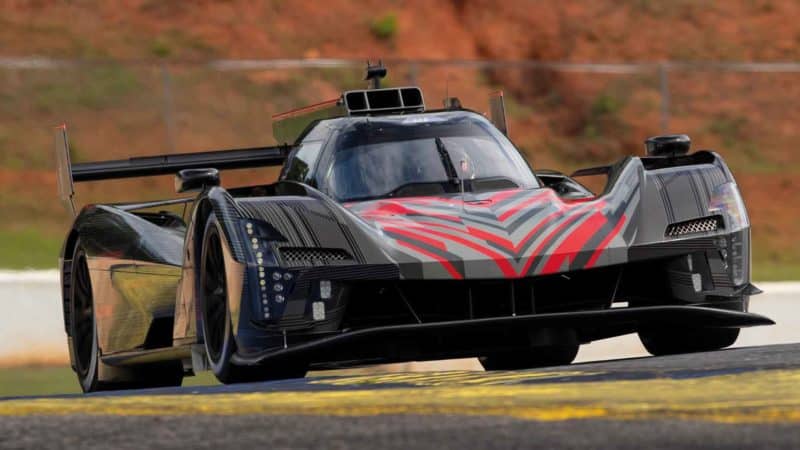
Cadillac hasn’t been hanging around, and has also been racking up the test miles. Does that make it the favourite for Daytona?
Richard Prince/Cadillac
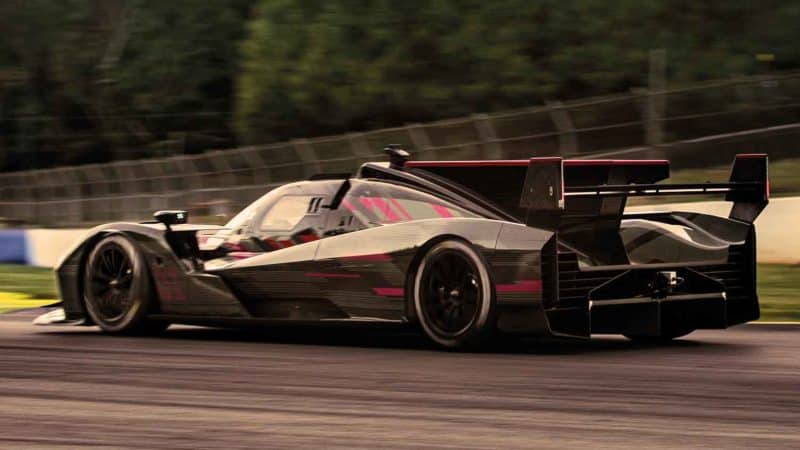
Richard Prince/Cadillac
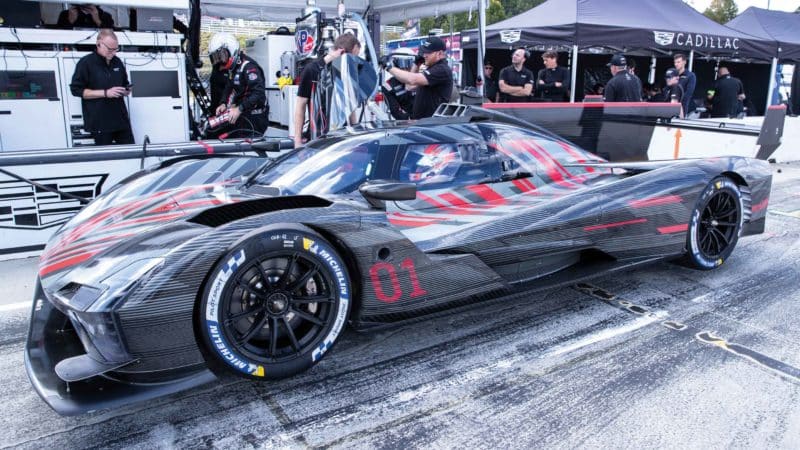
Glickenhaus
Class: LMH 2023 programme: Minimum of one car in WEC.
Drivers: TBC
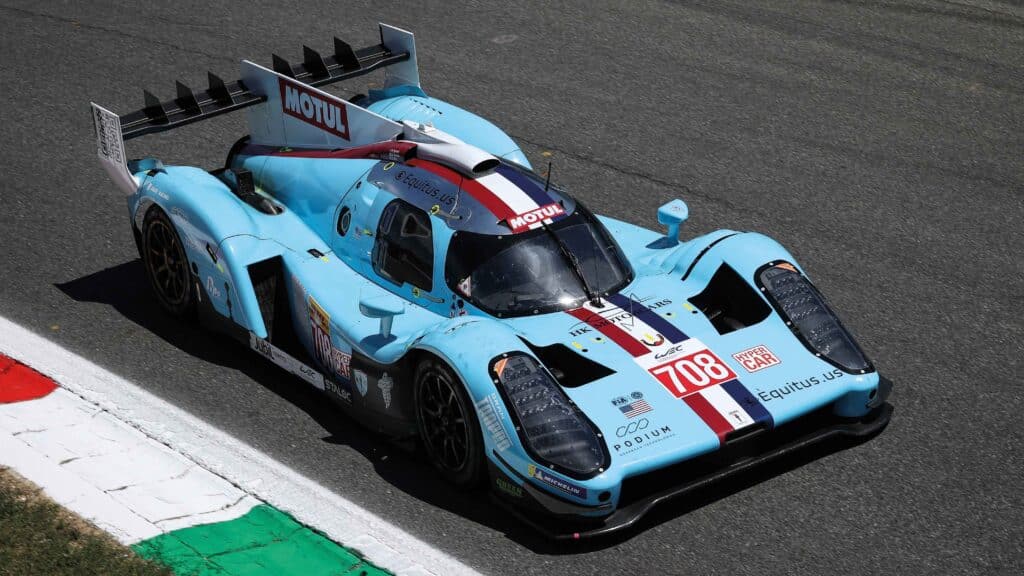
The fledgling US carmaker punched above its weight with its 007 LMH in 2022. The car finished on the podium at Le Mans and would almost certainly have won the Monza WEC round but for a turbocharger failure as the car was catching up after an early delay. Not a bad showing for the minnow of the WEC field.
Yet for all its successes, Glickenhaus Racing’s programme with its Pipo-engined non-hybrid developed in Italy by Podium Advanced Technologies has been in a state of flux since last summer when it ducked out of the WEC with two races to go.
Team owner Jim Glickenhaus has been candid about the need for sponsorship or some kind of partnership with a customer team if it is continue. Only in mid-December did he confirm that he would be back in the WEC in 2023.
All he had said as 2022 drew to a close was that Glickenhaus would race with a minimum of one car, most likely fielded by the Podium-run factory team. He hinted that there could be more than one 007 on the grid and that talks with potential partners were ongoing. He wouldn’t be drawn on whether that might involve an extra car at Le Mans in June.
Glickenhaus will need to make a firm commitment to compete in all seven races. The ACO is being firm on what it expects from its entrants in the Hypercar class and that is a participation in all rounds. Last year’s situation when it cut Glickenhaus a bit of slack to skip races isn’t likely to be repeated.
Glickenhaus has also outlined a desire to improve upon an LMH design that came on stream in 2021. The team concedes that it is already too late to have them in place for the season-opener at Sebring, but upgrades could arrive after Le Mans in June on the 007 –or 007s – racing in the WEC next year.
Q&A
Jim Glickenhaus, team owner and sponsor
How do you assess 2022?
“To get on the podium, to be the first American manufacturer to stand on the overall podium at Le Mans in 50 years, was a heck of an achievement.”
Would winning at Monza have trumped the Le Mans podium?
“I think it would. If a brand new turbo hadn’t grenaded, I think we would have won.”
Where is the programme for 2023 right now?
“We will be racing in the WEC next year. The worst case scenario is that we will come with one car, but we are hopeful that it will be more. That could be two cars run by ourselves or perhaps we might work with a customer.”
Lamborghini
Class: LMDh 2023 programme: Test and development from the spring ahead of a 2024 WEC and IMSA entry.
Drivers: Mirko Bortolotti, Andrea Caldarelli, Romain Grosjean
Lamborghini is, so far, the final major manufacturer to commit to the new world order. Yet it would be wrong to suggest that it is some kind of latecomer in terms of its ambition. Its interest pre-dates the historic day of the LMDh announcement in January 2020 and the programme announced in May ’22 represents its third attempt to join the party.
That it will race in both the WEC and IMSA from 2024 owes much to the tenacity of the boss of its Squadra Corse sporting arm, Giorgio Sanna. One insider has likened him to a terrier in his efforts to get an LMDh project going. A first attempt with Dallara failed, so Sanna then tried to piggyback on the Volkswagen project initially involving Audi as well as Porsche.
Now it is has partnered with Ligier Automotive and also the DC Racing Solutions organisation, which incorporates the Iron Lynx GT team and, since the summer of ’21, Prema Powerteam, best known for its single-seater exploits. A new set-up called Prema Engineering is a key part of the group developing the Lambo LMDh and will also be involved in running the cars. The involvement of DC in the project was almost certainly a major factor in Sanna finally getting his plans across the line.
Iron Lynx will be Lamborghini’s partner team for the LMDh. A debut at Daytona ’24 looks unlikely, but it appears it will have a car on each grid in March when WEC and IMSA race on the same bill over the SuperSebring week. The plan in year one is for Iron Lynx to run one car in the full WEC and a second in the IMSA enduros at Sebring, Watkins Glen and Road Atlanta, with the American entry crossing the pond to join the sister car for Le Mans.
The as-yet-unnamed LMDh should be up and running in the spring and will be powered by a bespoke twin-turbo V8 of around four litres capacity. It will be the first ground-up engine Squadra Corse has developed.
Q&A
Giorgio Sanna, head of Lamborghini Squadra Corse
Why is Lamborghini moving up?
“From the first days that IMSA started work on LMDh we were in favour from a technical and marketing perspective. LMDh is the best solution in terms of cost, performance and marketing.”
Why did you choose Ligier?
“We work with the VW Group, but we also look to create and develop our future by ourselves. The target was to develop technical competence in-house.”
Is developing an engine a big step for Squadra Corse?
“It is a first for us, but we are part of research and development at Lamborghini, which is investing in engines and hybridisation.”
BMW
Class: LMDh 2023 programme: Two cars in IMSA with RRL Racing; testing for WRT in preparation for the 2024 WEC
Drivers: No24 Connor De Phillippi, Nick Yelloly, Sheldon van der Linde (Daytona & Sebring), Colton Herta (Daytona); No25 Augusto Farfus, Philipp Eng, Marco Wittmann (Daytona & Sebring)
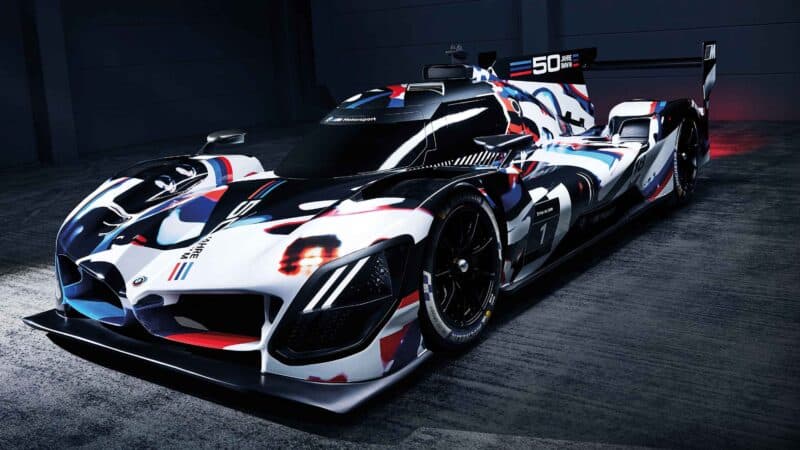
Following a year in the IMSA SportsCar Championship, BMW will be entering the WEC in ’24
BMW
BMW will be back at Le Mans shooting for outright victory in 2024, 25 years after its first and only win at the French enduro with the V12 LMR. But first it takes on the challenge of the IMSA series with a new LMDh called the M Hybrid V8, developed in conjunction with Dallara.
North America is the German manufacturer’s biggest market and the project wasn’t signed off until June ’21. That explains why it’s IMSA-only this year – a dual programme would have been a step too far. Bobby Rahal’s RLL team, a stalwart of BMW’s GT programmes, will field two cars in IMSA before the Belgian WRT squad, best known for its exploits with Audi, joins the WEC in 2024 with another two cars.
The car, as its name suggests, is powered by a V8, a twin-turbo developed out of the normally aspirated V8 that BMW used in the DTM in 2017-18. It retains the four-litre capacity of that unit.
The M Hybrid V8 started running in Europe in July and then quickly moved over to the US to continue development on the tracks on which it will race in its maiden season. BMW had expressed content with the development at press time, but perhaps crucially its attempts at a 24-hour race simulation had to be abandoned.
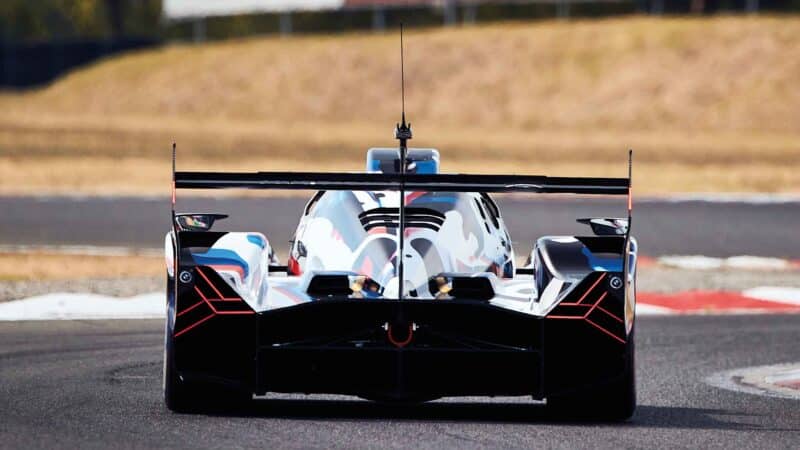
BMW’s design team is still capable of making good-looking cars; the M Hybrid V8 will race in the US next year
BMW

Q&A
Maurizio Leschiutta, BMW LMDh project leader
How have you dealt with the short timeline of the LMDh programme?
“We call our programme a zero error, zero time programme. Time to market is 18 months, which is pretty incredible from going from a clean sheet of paper more or less to the first race, one of the most gruelling races in the world, at Daytona.”
Do you feel ready for the challenge heading into first Daytona and then the full IMSA campaign?
“There’s always something extra you want to do. It’s a bit like studying for an exam: you can never be fully ready, it’s just that at some point the exam happens. Let’s say we will go to Daytona in the best conditions we could hope for given the timeframe.”
Explain how the latest iteration of BMW’s trademark front-end styling has been incorporated into the aerodynamics of the car?
“You either do an open-aero front end or a closed-aero front end like some of our competitors. We have gone for open and how you style the opening is up to you. One of the things we really like about LMDh is the opportunity to integrate our corporate identity into the car’s design. It is very important for us that anyone watching the races can identify the BMW DNA of the M Hybrid V8.”
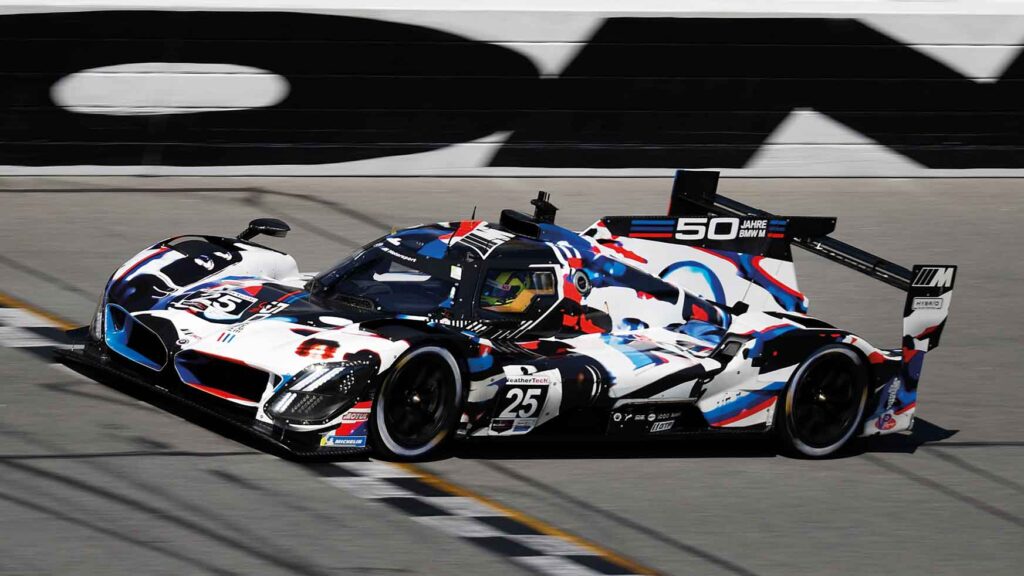
Acura
Class: LMDh 2023 programme: One IMSA entry each from Meyer Shank Racing and Wayne Taylor Racing.
Drivers: MSR – Tom Blomqvist, Colin Braun, Hélio Castroneves (Daytona, Sebring, Road Atlanta), Simon Pagenaud (Daytona); WTR – Ricky Taylor, Filipe Albuquerque, Louis Delétraz (Daytona, Sebring, Watkins Glen, Road Atlanta), Brendon Hartley (Daytona)
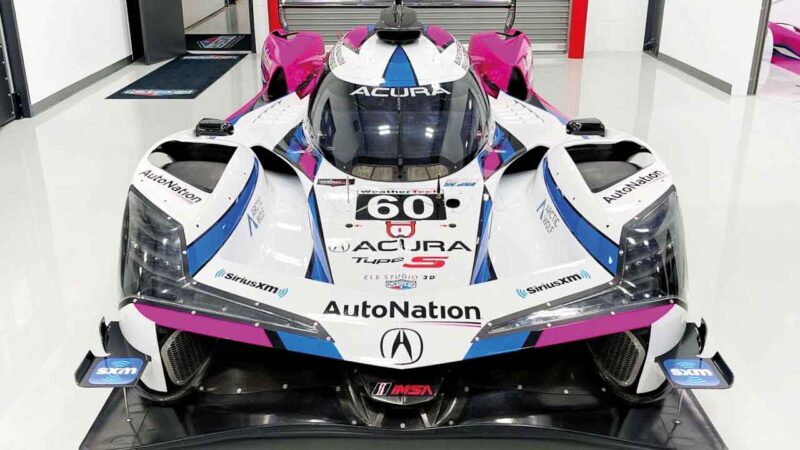
An all-American Japanese brand. Acura is consigned to the US currently, but could spread its wings
Acrua and the Honda Performance Development operation that leads its motor sport programmes continues a multifarious involvement in the prototype ranks dating back to 2007 when it joined the American Le Mans Series in LMP2. It returned to the top class in 2018 with a DPi developed in conjunction with ORECA and has continued that partnership with the French constructor as it segues into the LMDh programme announced in January ’21.
It is also business as usual in terms of the teams running the Honda brand’s IMSA entries: Meyer Shank Racing and Wayne Taylor Racing each return with a solo entry for a third season after jointly taking over from Penske for the 2021 season. The giant of US racing took a pair of IMSA titles during its three seasons as Acura’s factory team with the ARX-05 DPi, but failed to win one of the big enduros. WTR put that right at the first time of asking at Daytona in 2021 and Shank made it two in a row for the marque last year on the way to winning the title with Britons Tom Blomqvist and Oliver Jarvis.
The new car, powered by a 2.4-litre turbo V6 developed out of Honda’s IndyCar engine, has been up and running since June when it was shaken down at Paul Ricard. A test at Magny-Cours was quickly followed by a shift of the development programme to the US, with a second car coming on-stream at the back end of the summer.
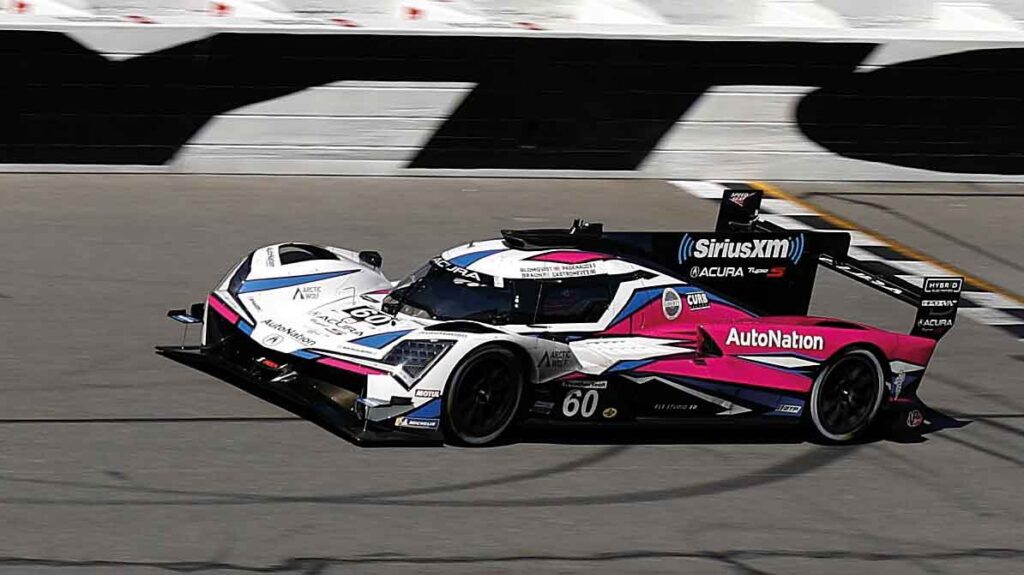
Acura’s LMDh programme is focused entirely on the IMSA series right now: Acura is a North American-only brand. A plan to take it global fell over as a result of the financial crisis at the end of the 2000s and resulted in the cancellation after only one season in 2009 of its LMP1 programme with the ARX-02a, a car conceived to take the make to Le Mans.
The two bosses of Acura’s partner teams, Wayne Taylor and Michael Shank, have expressed a desire to race at Le Mans and the manufacturer insists it will support them in that desire. Exactly how that might happen with the WEC demanding full-season participation from entrants remains to be seen. A Honda-branded ARX-06 perhaps?

Q&A
Wayne Taylor, team boss
How is WTR set for the IMSA season with its new car?
“WTR has always been in fairly good shape heading into most seasons, but this new GTP programme has been somewhat of a challenge for everyone. HPD and Acura have built a really good programme and, I think, collectively between us we have a good package.”
Will the new LMDh cars be reliable from the beginning this season?
“In some ways, I think this year is going to be a season of survival. I am optimistic for Daytona, but you have to be a little bit sceptical because during all the testing no one has really run continuously without stopping with issues. Porsche has been running for a year now, something no one else has done, so they are definitely ahead of us in terms of the reliability of the cars.”
Do you think you can one day race the ARX-06 at Le Mans?
“It’s my desire to go there with Acura. I’ve won Daytona and Sebring as a driver and a team owner, but I really want to get the Le Mans win too. It’s my life’s ambition. We can’t go until we get the approval of Honda because Acura is a North American brand, but everyone is working hard to be there in 2024.”
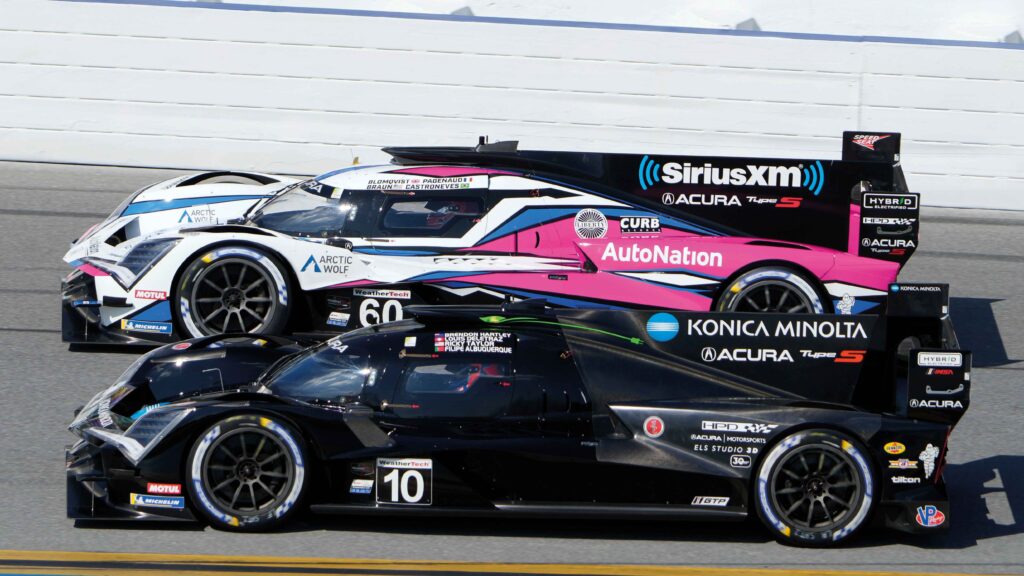
Alpine
Class: LMDh 2023 programme: Test and development alongside a two-car LMP2 WEC assault
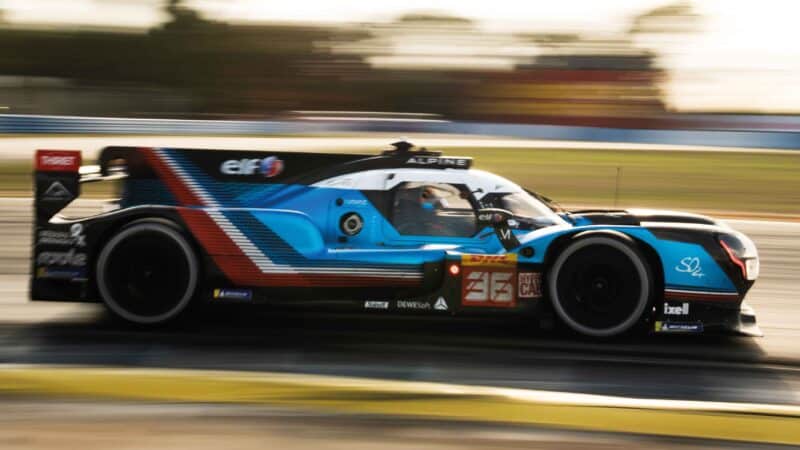
Alpine made waves by running a ‘grandfathered’ LMP1 chassis against the Hypercars in 2022, but will soon make its own big-hitter.
Getty Images
Renault’s niche sports car brand is undergoing a relaunch, so what better way than to promote itself with a campaign aimed at rekindling past glories and repeating its 1978 Le Mans victory with Didier Pironi and Jean-Pierre Jaussaud? Remember the winning car that year was correctly the Alpine-Renault A442B, not a Renault-Alpine.
The Signatech team that successfully represented the marque in LMP2 from 2013 — winning the class at Le Mans three times and the WEC title twice — stepped up to the Hypercar class in 2021 with an old ORECA LMP1 design ‘grandfathered’ to run against the new LMHs. But team boss Philippe Sinault never made any secret of his ambitions to get a proper programme with either an LMDh or LMH off the ground.
Laurent Rossi, chief executive officer of Alpine, admitted at Le Mans in September ’20 that an evaluation of a long-term project starting in 2024 was underway. Confirmation of a WEC assault with a pair of LMDhs came almost exactly a year later. Alpine will continue a relationship with ORECA dating back to 2013 and is developing a powerplant at the Viry-Châtillon facility in Paris that produced a line of world championship-winning Formula 1 engines. It’s already up and running on the test bench, Alpine has confirmed. Development of the Alpine LMDh started in earnest in the summer once ORECA had got the Acura ARX-06 out on track: it didn’t have the capacity to undertake two design and development programmes side by side. When the Alpine LMDh will hit the track isn’t clear. No timeline has been released, only that it will be as soon as possible this year.
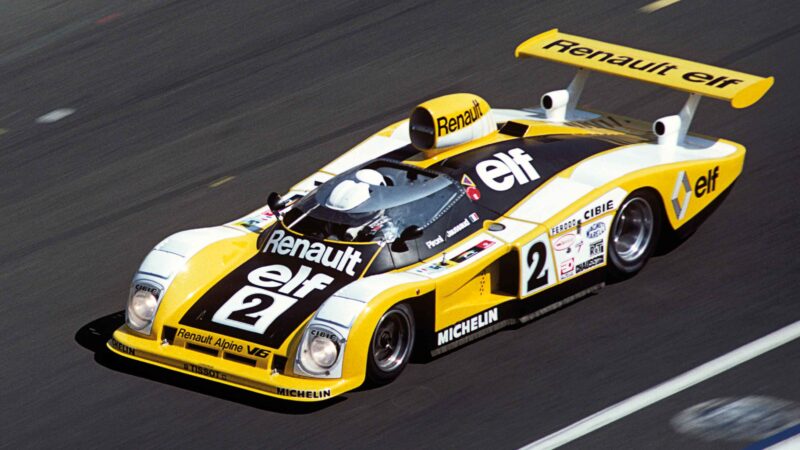
Alpine will be gunning to repeat its Le Mans victory of 1978 with the Alpine-Renault, right
Getty Images

Q&A
Bruno Famin, executive director, Alpine Racing
Why is Alpine building an LMDh for the WEC?
“Alpine has a very exciting strategy to develop the brand with motor sport in two ways, first transferring technology to road cars and secondly using the media to develop the awareness of the brand. We have the main pillar which is F1, but endurance is a huge discipline and part of the history of Alpine.”
How close did you get to going down the LMH route?
“We were never close to doing LMH. We believe that LMDh offers the best return on investment. The real added value is not in the hardware itself but in the energy management.”
What can you tell us about the engine concept?
“It was finalised quite some time ago and we are now testing and developing on the bench. I can’t give more detail yet.”
Peugeot
Class: LMH 2023 programme: Two cars in WEC
Drivers: No93 Paul di Resta, Jean-Éric Vergne, Mikkel Jensen; No94 Loic Duval, Nico Müller, Gustavo Menezes
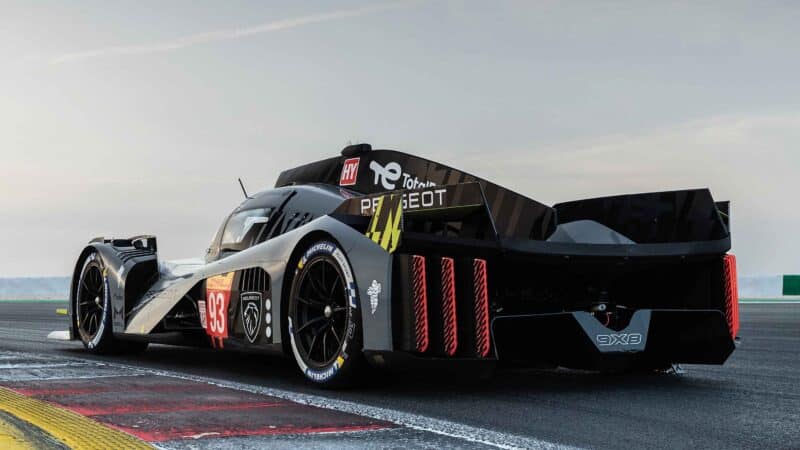
Peugeot’s radical wingless 9X8 has already raced, but has yet to make a real impression. The team knows it faces an important winter break
Peugeot Sport
Peugeot shocked many when it revealed a show car in the summer of ’21 without a conventional rear wing, and then surprised quite a few when it began racing a car known as the 9X8, sans wing last year. The French manufacturer exploited the freedoms in the LMH rules to come up with something outside of the box and insists that the concept is sound.
The French manufacturer didn’t look entirely convincing on its return to top-flight sports car racing after an absence of more than 10 years. The bosses at Peugeot Sport always stressed that 2022 was a learning year ahead of the big push this season as it aims to repeat the Le Mans successes of its 905 3.5-litre Group C car of 1992 and ’93 and the 908 HDi LMP1 turbodiesel in 2009.
The car never made it onto the podium in the three races it undertook from Monza on, nor did one of the cars get to the finish without suffering some kind of technical delay. It would be wrong to say the car wasn’t quick, especially after a BoP handout for the Bahrain finale, witness Paul di Resta’s front-row starting slot and fastest race lap for Jean-Éric Vergne. But the jury is out on its pace over a double stint on the tyres.
Peugeot chose not to join the WEC until Monza in July, though it would be wrong to call it a delay. When it announced its LMH programme in November 2019, the hard deadline was for the start of the 2022/23 season (the series was running to the short-lived winter-series format at the time). That would have meant a late-summer debut, so it was arguably ahead of schedule.
Peugeot opted for six months of testing prior to debut in the knowledge that once the 9X8 was homologated, its specification would be largely fixed for the lifespan of the car. The LMH rules allow only five ‘evo joker’ upgrades made in the name of performance.
Peugeot conceded that there was work to be done over the winter and had a plan in place. A first Le Mans simulation was scheduled before the end of last year as it strived to take a step forward.
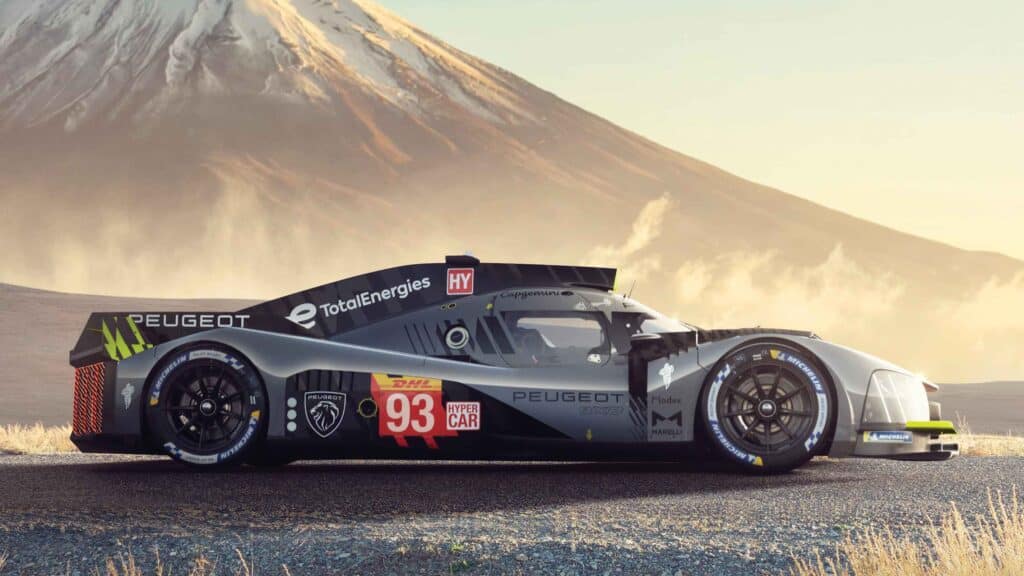

Q&A
Olivier Jansonnie, LMH technical director Peugeot Sport
How would you mark your three races in 2022 out of 10?
“The first and most important thing is that we are pleased to have done these three races. The team was pretty new and we needed to learn how to work together and how to operate. This is something we are quite happy with, the improvement over these three races. On that side, I would say it was a seven or even an eight. In terms of car reliability it would be a lot lower mark. We were quite disappointed with that.”
Are there concerns over the pace of the 9X8 over a double stint?
“At the start of the race in Bahrain [the series finale] it looked quite good, especially the first stint on the tyres. The second stint is a bit more difficult for us right now. That is a point where it is difficult to assess whether it is pure car performance or our lack of experience of the races and the tyres. It is also extremely difficult to assess the level of performance of your car when all your races have been harmed by reliability issues.”
Are you confident that after a winter of development you can arrive at Sebring with a competitive package?
“We know what we have in the pipeline and we are confident that we will bring some improvements. We know what we have to do to catch up. All we can say is we have a plan and if it goes perfectly it should bring us to where we should have been at the beginning.”
Race Calendar
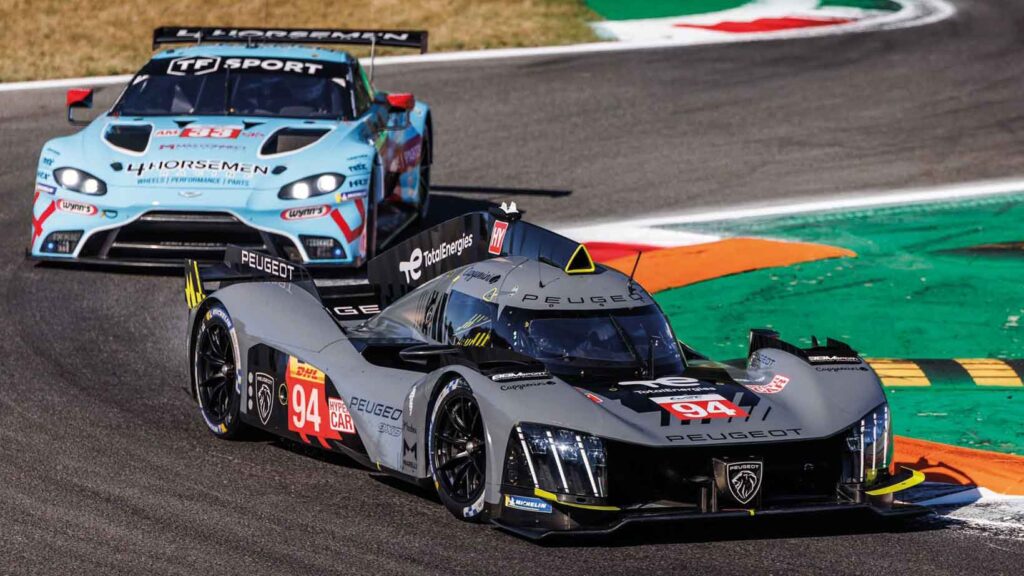
2023 World Endurance Championship
Sebring 1000 Miles March 17
Portimão Six Hours April 16
Spa Six Hours April 29
Le Mans 24 Hours June 10/11
Monza Six Hours July 9
Fuji Six Hours September 10
Bahrain Eight Hours November 4
2023 IMSA SportsCar Championship
Daytona 24 Hours January 28/29
Sebring 12 Hours March 18
Long Beach (1hr 40min) April 15
Laguna Seca (2hr 40min) May 14
Watkins Glen Six Hours June 25
Mosport (2hr 40min) July 9
Road America (2hr 40min) August 6
Indianapolis (2hr 40min) September 17
Road Atlanta/Petit Le Mans (1000 miles) October 14
